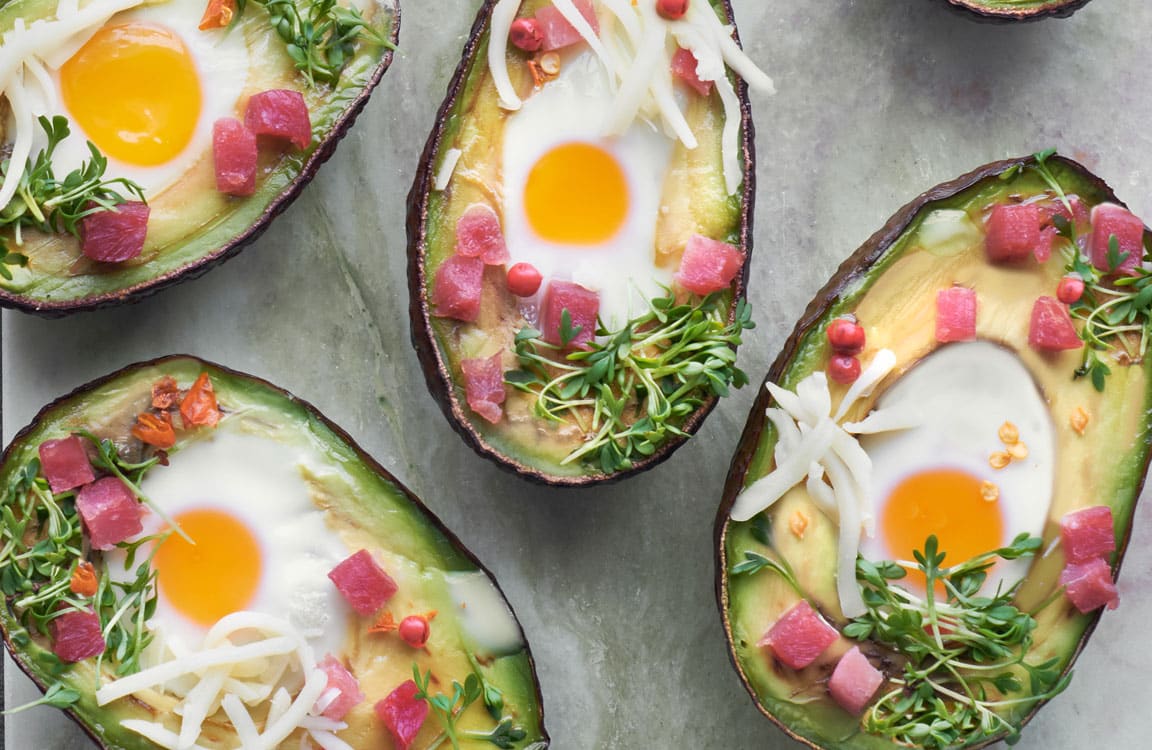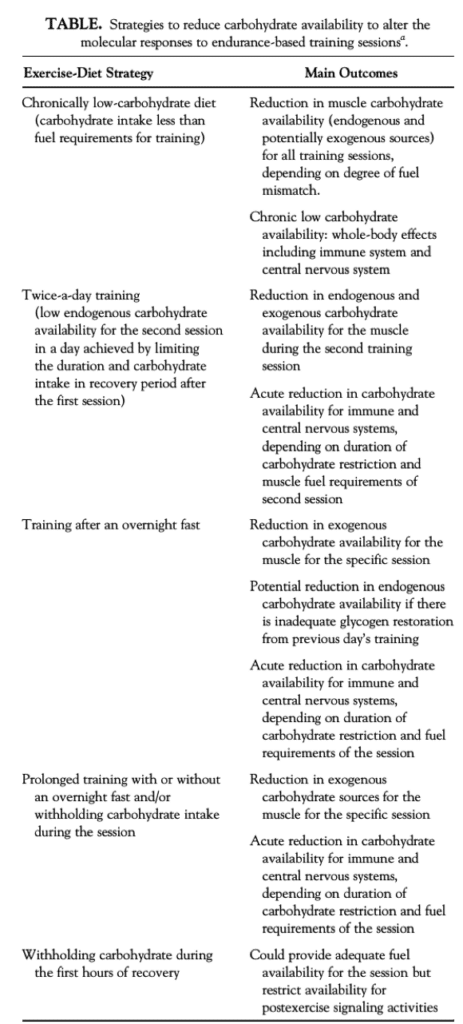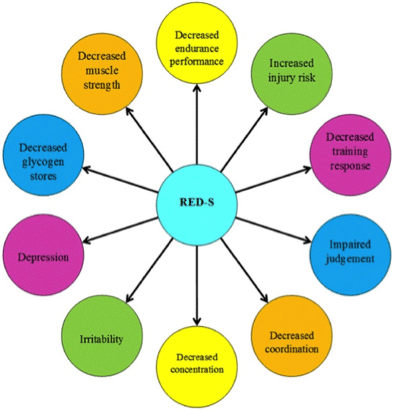
Should You Become a Fat Adapted Ultrarunner?
By Jason Koop,
Head Coach of CTS Ultrarunning
This article is the third in a series to review the most controversial training topics in ultrarunning. If you missed the first two, go check how to train for the downhills and strength training for ultrarunners as well as the overview article of all three.
Perhaps no topic ruffles more feathers than diet, and I’m sure this will be no different. As an anecdote, in Training Essentials for Ultrarunning I wrote a 500 word sidebar titled ‘Forget Fat Adaptation’. After the book was published, that silly side bar generated more hate mail than I have received cumulatively in my entire coaching career. Some of the feedback I could take to heart. However, most of the feedback contained more over-enthusiastic dogma than sound reason. When discussing diet, people get… passionate.
Strategies for fat adaptation
Athletes have a menu of options to choose from if they desire to become more fat adapted. First, they can train in such a way where carbohydrate stores are intentionally reduced from the onset of training. This can done by in a variety of ways-
- Training in the morning after the overnight fast and intentionally skipping breakfast
- Doing a hard evening session, restricting carbohydrate (CHO) after the session and then training again the next morning.
- Doing a two-a-day where the first session is hard (thus depleting CHO stores), and intentionally restricting CHO consumption between the sessions.
Second, athletes can train with low carbohydrate availability simply by under consuming (or not consuming at all) carbohydrate during exercise.
Finally, athletes can manipulate their diet by-
- Chronically consuming a low carbohydrate diet
- Periodizing their diet around intensity, consuming a greater percentage of carbohydrate when the intensity is high and greater percentage of fat when it is low
- Adopting a ketogenic diet (consuming less than <50g CHO/day), either long or short term
Rather than regurgitate these strategies in depth, I will point you to the following table from a paper by the esteemed Louis Burke and John Hawley that lays these strategies out quite nicely.
If the goal of these strategies is to shift substrate utilization toward more fat burning, they all work. This is not rocket science, your body is smart. If you reduce, restrict and manipulate macronutrient intake (carbohydrate, protein and fat), your body is adaptable enough shift to the fuel that is available (or at least away from what’s not available). While all of these strategies technically work to allow an ultrarunner to burn more fat, I don’t advocate for them for the following reasons.
Short term energy deficits
With any of these strategies, you are going to have to go through at least some short term energy deficit, where the calories you consume are less than the calories required for training. You might think, “no biggie, I’ll just grab some more pizza (or an avocado, perhaps?) for dinner”, to make up the balance. While this long term energy deficit should be made up, we’re learning more and more that Relative Energy Deficiency in Sport (or RED-S) is problematic for endurance athletes. This normally happens when there is short term (hours, not days) energy deficiency caused by a workout combined with underfueling. That acute energy deficiency is then compounded by the fat adaptation strategy. The host of performance complications include decreased muscle strength, decreased performance, increased injury risk, and decreased training response, to name a few.
Potential Performance Effects of Relative Energy Deficiency in Sport (**Aerobic and anaerobic performance).
Source Mountjoy (2018)
Enjoying This Article? Get More Free Running Training Tips
Get our coaches' best training advice, delivered straight to your inbox weekly.
Ultramarathoners are already really good at fat burning
Simply by running copious hours at a relatively low intensity, ultrarunners are already really good at burning fat. As stated in the recent IAAF consensus statement on nutrition for athletes-
“high fat oxidation rates also appear to be inherent in ultramarathon runners regardless of background macronutrient dietary modifications.”
Trying to double down on an effect that you already have in the first place is a high risk, low reward (or no reward) situation.
Adherence is problematic and metabolic manipulation is transient
With any of these fat adaptation strategies, adherence is difficult, and yet critical for success. We know from the work on the ketogenic diet that you need several weeks of adherence before maximum benefits in fat oxidizing capabilities start to appear. The fat burning effect loses it efficacy just a few days after reintroducing carbohydrates. While less studied, the transient nature of other fat adaptation strategies are likely similar. They will take some time to show an effect, and that effect disappears quickly.
What about these athletes who are crushing it on low carb diets?
I would be remiss to discuss the numbers of well known and not so well known athletes that have been able to improve their performance with these fat adaptation strategies. They are out there for sure, filling up your Instagram and Strava feed with their latest accomplishments.
I will let you in on a not-so-secret… almost all of these performance benefits have nothing to do with the fat-adaptation side of the equation. They have almost entirely to do with the fact that the athlete has lost weight. This point is driven home when I hear athletes advocate for using a ketogenic diet as a ‘tool’. What this really means is a tool for weight loss and the resulting weight loss leads to improvement.
I don’t think it’s a good health message
Finally, if you are spending lots of time figuring out where to skip your gel (or meal for that matter), you’ve got it all wrong. Much of the issue I have with fat adaption strategies lies in the fact that there is too much fixation on what you are leaving out (breakfast, for example) and not enough on what you are putting in. If you want to be an athlete, the focus needs to be on the latter. High quality foods, not the absence of them, are what athletes should focus on.
We need less obsessing on calorie composition and more on calorie quality and adequate quantity.
When you focus on quality and adequate quantity, and not composition and restriction, the results are physically, emotionally and psychologically healthier outcomes (see the figure above for psycho/emotional complications stemming from RED-S).
There is no greater example of poor judgement caused by fat adapting than the term ‘strategic tuber’ or ‘strategic fruit’, which I have seen pop up in the ketogenic and low-carb community. ‘Strategic’ in this sense fits the narrow definition of a way of consuming carbohydrates (tubers and fruit in this case) to fuel intense workouts, but not so much that it violates some predetermined principle of carbohydrate restriction. Since when do we need to ‘strategically’ use a food source that comes from the ground, is rich in vitamins and nutrients, tasty and fulfilling? If a simple ‘not-so-strategic’ banana – with all it’s vitamins and minerals – is going to destroy your nutrition strategy, there’s something wrong with your nutrition strategy, not with the banana.
Just eat the sweet potatoes, bananas and apples, people. They’re good for you.
References-
- Mountjoy M, Sundgot-Borgen JK, Burke LM, et al
- IOC consensus statement on relative energy deficiency in sport (RED-S): 2018 update- British Journal of Sports Medicine 2018;52:687-697.



Comments 17
Pingback: New Research Suggests Lowering Protein Requirements for Masters Athletes - Jason Koop
I would love to see a discussion/podcast with Peter Attia for his take on your take.
Great article.
Just wondering (likely in a pedantic way) about the closing comment: “Just eat the sweet potatoes, bananas and apples, people. They’re good for you.“
This seems fine from a fuelling perspective but we’re also constantly rebuilding our body with what we eat. We apparently need a good mix of nutrients and if my natural (i.e. non strategic) tendency will not result in a good mix (and I fill up on sweet potatoes and bananas) I will not get the protein that I apparently need.
Pingback: How Endurance Athletes Can Decide If Intermittent Fasting Is For You - Chris Carmichael
Pingback: Jak se stravovat během ultramaratonu? – ultrarunner.zh
Pingback: The Advantages of Fat Adaptive Running | runningbrite
Well said and written, eaten the fruit people. Delicious and nutritious.
Pingback: Key Takeaways from International Society of Sports Nutrition Position Stand on Ultrarunning Nutrition - Jason Koop
Pingback: Should You Become a Plant-Based Athlete? - Jason Koop
Nice article. I periodically enjoy LCHF and perceive benefits in hitting the wall later and lower inflamation, but appreciate the balance and the idea that higher carb jags may be beneficial.
Nice article filled with common (uncommon?) sense. The diagram showing the characteristics of RED-S accurately describes many runners in the later stages of an ultra, extra emphasis on poor judgment and irritability. We’re talking 10 for 10 here people.
Such a great message! Thank you for sharing!
Like your take on strength training your take on high fat eating is short-sighted. Being strong and having some muscle is important to leading a vigorous life especially into your 50s and 60s. Similarly eating a high fat diet can be important to your health (in my case it controls my gout without the need for drugs).
For recreational athletes some things are more important than running or riding a little faster.
Interesting write up. Is it good to have low exercise weeks low carb fueling then ramp up carbs for an upcoming intense tour? Will you utilize carbs better as fuel?
Is fat utilization a good source for low intensity but long rides?
Thank you for this article. As there always is with nutrition, it is difficult to identify what will benefit performance, especially with Ironman or long-distance training. The advocates of a LCHF strategy, as you point out, are more vocal on social media. Additionally, most pro-LCHF people that post also state they use gels and sugar during the actual race (i.e. the strategic gel). However, I wonder if at that point they can’t use carbs as well. I think I also read somewhere that very few, if any, elite or Olympian level athletes follow such a strategy.
I recently prepared for an event on a LCHF diet. The first half was a trail run the second a bike ride into a headwind. For the run (2hr40min) I only drank water plus electrolytes, on the bike I started to consume gels (purchased before committing to the LCHF diet). Half an hour into the ride the legs went – HR dropped from high 140s to bob between 120 & 135. In the past a gel would have provided a “turbo” boost.
Just an observation until I try a five hour effort without food.
You refueled too late. Should take the gels right from the start.